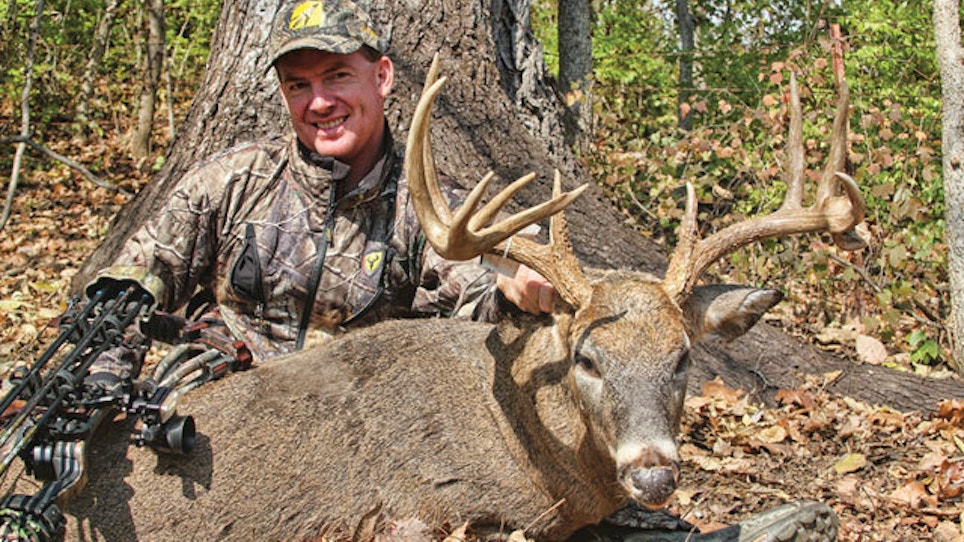The last thing people who have hunted with me a lot would call me is a “gadgeteer.” I like my gear simple, functional and rugged. I am not a Facebooker or a Tweeter, and I just learned what Instagram is. Sort of. GPS? Could I have a map and compass, please?
That said, I do like to analyze data. When I’m planning a hunt out West, the first thing I do is study harvest data to help me determine where and when the biggest critters are killed, then obtain topographic maps and aerial photographs so I can study the lay of the land. This is the chess game I love—trying to put the puzzle pieces together so I end up hunting the sweet spot right off the bat.
Then there’s whitetail hunting. When hunting a familiar property, if I’m not careful I find myself getting complacent, relying not on current intel but instead electing to hunt the same stands that have historically produced. And many times I have ended up leaving asking myself, “What happened?”
Do you find yourself in the same rut, even during the rut? Hunting the same stands, but just not getting the results you have gotten in years past?
A camp I hunted every season for nearly a decade is a prime example. The hunting on the property was controlled by the landowner, who had stands set in the same places he’d been hunting since he was a kid. Believing that wandering around the woods during the season was a bad thing—and it often is—he didn’t allow anyone to move a stand or set a fresh one. During the years I hunted there I watched success rates fall like a barometer on hurricane watch until, finally, I simply quit going there.
There’s no doubt that overhunting stands, or hunting a prime stand when conditions are wrong, is the best way on planet earth to go from hot to cold. Yet there are those who believe they are so good, so stealthy, that they can get away with hunting the same tree day after day after day. I used to be that way. Then I read the data.
In this case, the data is a recent South Carolina study that compared behavior of bucks in relation to the amount of hunting done at bait sites and hunting stands. Using GPS collars affixed to mature bucks, the researchers took a fix on them—as well as a few yearling bucks—every 30 minutes from August 24 to November 22. What they learned was that, indeed, older bucks knew when an area was overhunted.
The numbers don’t lie. In this study, mature bucks were five times more likely to use bait sites during daylight hours on August 24 as on November 22. Yes, hunting bait sites educated those big bucks. And what about the yearling bucks? As we all might surmise, these younger bucks were only twice as likely to use bait during daylight hours on August 24 as on November 22.
OK, you think. I’ll simply slip up into a stand adjacent to a food plot the deer have been hammering for weeks. There will be does there and it’ll be a slam dunk. Or not. This study showed that mature bucks were four times more likely to use food plots in daylight hours on August 24 as on November 22. And that overhunting of your favorite stand? This study showed that after a hunter sat in the same treestand over a three-day period for just 12 hours total, mature bucks were twice as likely to avoid that stand.
And those bucks that seem to keep passing through the area but magically walk just out of bow range? The mature bucks in this study were located an average of 55 yards farther away from hunting stands on the last day versus the first day, and they were found an average of 17.5 yards farther away from stands during daylight versus dark. We often talk about how dumb young bucks are compared to older deer. In this study, yearling locations were 16.7 yards closer to hunting stands at the end of the study as compared to the beginning and 15.1 yards closer to hunting stands during daylight versus dark. Obviously, they just don’t know better. But give them another two years of roaming the same ground where you are overhunting the same stands …
This study focused on time on stand, but what about the number of hunters in the woods? Another GPS collar study revealed that at one hunter per 250 acres, minimal effect could be seen in the way bucks move. However, when hunter density increased to one hunter per 75 acres, bucks responded by choosing thicker cover and traveling less, and observation rates/hunter success decreased. It also took just three days for bucks to change their behavior once the season opened. These numbers might or might not be the same where you hunt—different topography, the amount of cover, and how the land is hunted will all play a role—but obviously there is a breaking point where having too many people in the woods affects your ability to view and harvest mature bucks.
This data, and much more like it, tells us that to maximize the odds at killing a mature buck, we need to hunt smarter and do everything in our power to not let the deer know we are on the planet. Old habits might die hard, but unless they do, for most of us all we’ll kill during this year’s rut is time.






